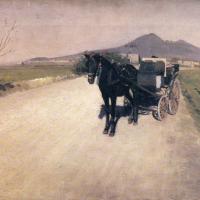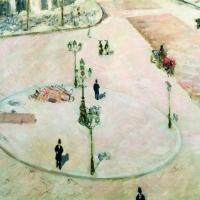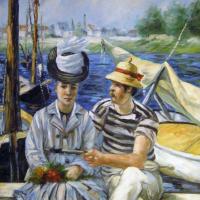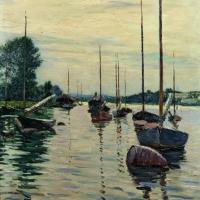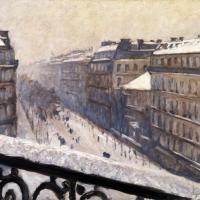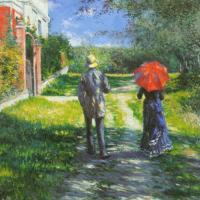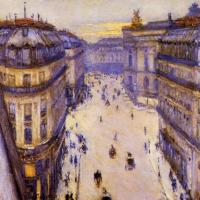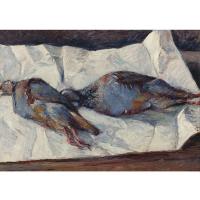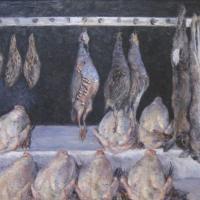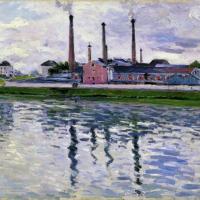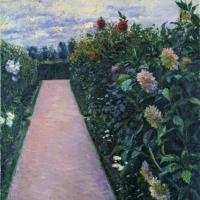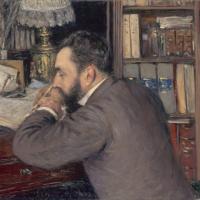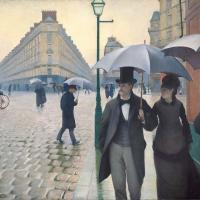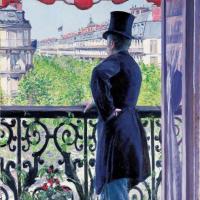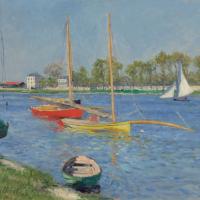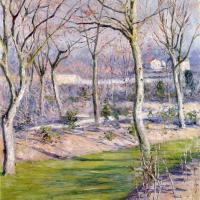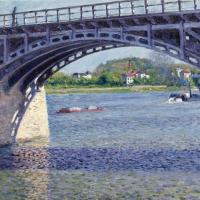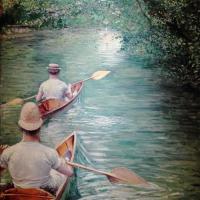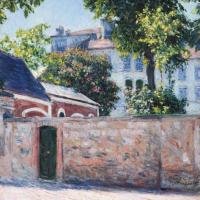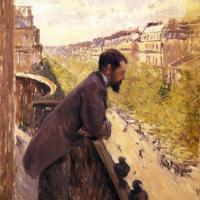Gustave Caillebotte (1848-1894)
Gustave Caillebotte (19 August 1848 – 21 February 1894) was a French painter, member and patron of the artists known as Impressionists, although he painted in a more realistic manner than many others in the group. Caillebotte was noted for his early interest in photography as an art form.
Gustave Caillebotte was born on 19 August 1848 to an upper-class Parisian family living in the rue du Faubourg-Saint-Denis. His father, Martial Caillebotte (1799–1874), was the inheritor of the family's military textile business and was also a judge at the Seine department's Tribunal de commerce. Caillebotte earned a law degree in 1868 and a license to practice law in 1870, and he also was an engineer. Shortly after his education, he was drafted to fight in the Franco-Prussian war, and served from July 1870 to March 1871 in the Garde Nationale Mobile de la Seine.
After the war, Caillebotte began visiting the studio of painter Léon Bonnat, where he began to study painting seriously. With regard to the composition and painting style of his works, Caillebotte may be considered part of the first movement after Impressionism: Neo-Impressionism. The second period of Pointillism, whose main representative was Georges Seurat, announced its influence in the late works that Caillebotte painted at his country house in Petit Gennevilliers. Caillebotte's style belongs to the School of Realism but was strongly influenced by his Impressionist associates.
Caillebotte painted many domestic and familial scenes, interiors, and portraits. Many of his paintings depict members of his family. His country scenes at Yerres focus on pleasure boating on the leisurely stream as well as fishing and swimming, and domestic scenes around his country home. Caillebotte is best known for his paintings of urban Paris, such as The Europe Bridge (Le Pont de l'Europe) (1876), and Paris Street; Rainy Day (Rue de Paris; temps de pluie, also known as La Place de l'Europe, temps de pluie) (1877). Caillebotte's still life paintings focus primarily on food, some at table ready to be eaten and some ready to be purchased, as in a series of paintings he made of meat at a butcher shop.
Caillebotte's painting career slowed dramatically in the early 1890s when he stopped making large canvases. Caillebotte died of pulmonary congestion while working in his garden at Petit-Gennevilliers in 1894 at age 45. He was interred at Père Lachaise Cemeteryin Paris.
The National Gallery of Art (Washington, D.C.) and the Kimbell Art Museum (Fort Worth, Texas) organized a major retrospective display of Caillebotte's painting for exhibition in 2015–2016, to pursue further the rediscovery of his work.
Convinced after the death in 1876 of his younger brother René that his own life would be short, Caillebotte wrote his will while still in his twenties. In the will, Caillebotte bequeathed a large collection to the French government. This collection ultimately included sixty-eight paintings by various artists: Camille Pissarro (nineteen), Claude Monet (fourteen), Pierre-Auguste Renoir (ten), Alfred Sisley (nine), Edgar Degas (seven), Paul Cézanne (five), and Édouard Manet (four).
At the time of Caillebotte's death, the Impressionists were still largely condemned by the art establishment in France, which was dominated by Academic art and specifically, the Académie des Beaux-Arts. Because of this, Caillebotte realised that the cultural treasures in his collection would likely disappear into "attics" and "provincial museums". He therefore stipulated that they must be displayed in the Luxembourg Palace (devoted to the work of living artists), and then in the Louvre.
The French government would not agree to these terms. In February 1896, they finally negotiated terms with Renoir, who was the executor of the will, under which they took thirty-eight of the paintings to the Luxembourg Palace. The installation constituted the first presentation of the Impressionists in a public venue in France. The remaining twenty-nine paintings (one by Degas was taken by Renoir in payment for his services as executor) were offered to the French government twice again, in 1904 and 1908, and were both times refused. When the government finally attempted to claim them in 1928, the bequest was repudiated by the widow of Caillebotte's brother Martial Caillebotte. Most of the remaining works were purchased by Albert C. Barnes and now are held by the Barnes Foundation.
Forty of Caillebotte's own works are held by the Musée d'Orsay. His Man on a Balcony, Boulevard Haussmann (Homme au balcon, boulevard Haussmann) (1880), sold for more than US$14.3 million in 2000.


